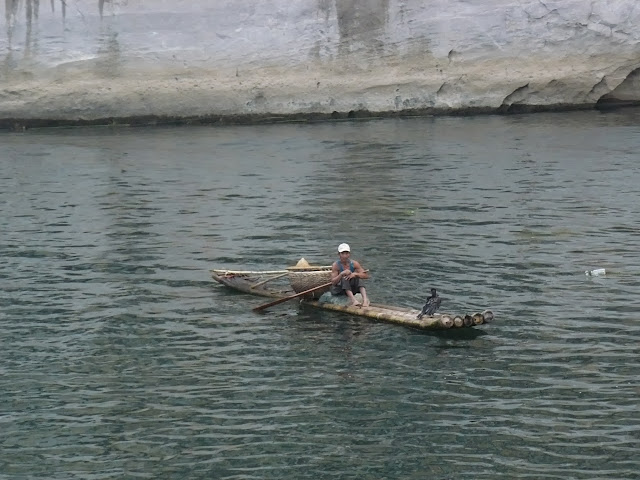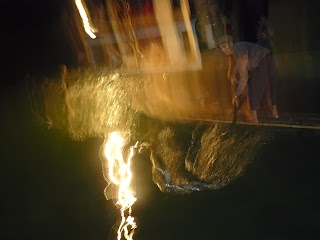Fly Fishing in China ?
These photos from Guilin and Lijiang are proof of trout, carp, koi, and pan fish.
But in a country like China, Morocco, Tanzania or parts of Mexico the idea of fly fishing, especially catch and release fly fishing is as hard for the natives to imagine as it is for us when we try to imagine the fun of building the pyramids or erecting the moai on Easter Island.
Is there fly fishing in China? Is it possible to teach "catch and release" to this ancient culture? Could the introduction of a parachute adams destabilize the social structure of a river side fishing village?
FishB4UFly's intrepid fly fishing explorers tracked down the answers to these questions. Here for the first time they are REVEALED.
1. YES. There is Fly Fishing in China. And, just like the instructions on how to put together the "Made in China" patio umbrella you got at Walmart, the Chinese have put an original spin on "Fly" fishing. In fact, they didn't borrow fly fishing from Izaak Walton in 1653 as blue blooded fly fishers would undoubtably suggest. They'd been fly fishing for at least 700 years before Izaak tied on his first streamer.
2. NO. They already know. Catch and Release, in the Chinese way, has been going on in China since the Tang dynasty.
3. NO. Even though China has all the best materials for fly rods, parachutes, dubbing, and fly lines, it is unlikely that a single subsistence angler will be interested in a technique so backward and unnecessarily complicated.
And here is the photographic proof taken on the Li River in October 2008.
Who put the "fly" in "fly fishing?"
First we must allow for an alternate Chinese specific use of the word "fly." Rather than its archaic easily misinterpreted use as a description of a bug that is not actually a fly, we must revert back to its original and most common usage as a verb rather than a noun. As in, "Look at the big black cormorants those women are carrying on those long poles. I wonder why they don't just fly away."Who put the "Fishing" in "Fly Fishing."
The first Neanderthal to catch a fish mimicked a grizzly swatting a migrating salmon out of the stream. The first Chinese "Fly" fisher saw a cormorant dive in, swim underwater, grab a fish, fly up on a branch, work the fish into a head down position, and swallow it. Instead of mimicking the cormorant the hungry crafty observer made friends with the Cormorant and taught him to bring back his fish to enjoy the meal together. He let the bird "fly" away, dive into the water, swim after schools of fish, "catch" a nice one, bring it back to his pole, and then he "released" it into his fishing basket. The ring around the cormorant's neck helped keep the bird focused while letting him swallow the smaller fish.
The battery powered spot light replaced the traditional lantern when the Guilin K-Mart opened.























